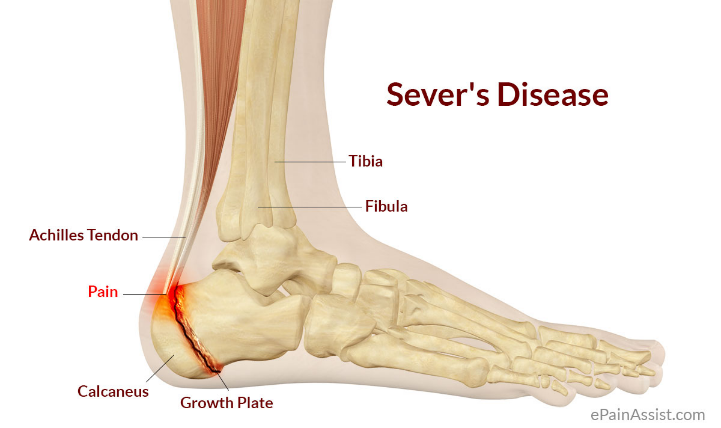Do you see them rubbing their heels after exercise?
One of the most common causes of heel pain in children is Severs Disease. It is most prevalent from ages 8 to 14. Boys are slightly more common to have this injury than girls. Pain can present from the back of the heel to underneath the sole of the foot especially in sports involving running, jumping and explosive leg movements. Especially one to look out for now that sports are returning after the COVID-19 break!
So, what is Sever’s:
The Achilles tendon joins the calf muscle at the back of the leg to the heel bone. A Sever’s lesion is a condition that affects this attachment point at the heel bone. As the young athlete’s bones grow at an accelerated rate, the calf muscles fail to lengthen at the same rate and are put on stretch. This adds tension to the attachment of the Achilles tendon which has a pulling effect on the underlying growth plate at the calcaneus (heel bone).
During this phase, pre-teens can get pain at the attachment area, or in the tendon or the heel bone itself. This is known as apophysitis. Sever’s disease most commonly affects children between the ages of 8 and 14 years, when growth spurts are beginning.
What Causes Sever’s:
- Over activity/overuse from a mixture of club sports, school sports, recreational activity etc.
- Lack of supportive footwear
- Running and jumping biomechanics (poor technique)
- Training or playing on hard surfaces
- Training or playing heavily after an extended period of complete rest from activity/sport
What Should you do?
- Ice 5 mins (especially when inflamed and acute) – 2 to 3 x per day
- Use of anti-inflammatory medication to reduce the initial inflammation – on heels
- Heel lift /heel cup and/or orthotics as well as appropriate and supportive footwear
- Use of foam roller on calf. NOTE: It is important to not try and stretch the calf muscle as overstretching when this area is irritated can cause the symptoms to get worse as you’ll be putting more strain on the attachment point at the heel. Try foam rolling and massage through the calf instead.
What can Physiotherapy do?
- Activity modification – reduction of weight-bearing activities for between 2 – 8 weeks
- Calf massage
- Taping to unload the heel
- Appropriate Stretches – when pain free
- Appropriate functional motor control exercises when pain free
- Create an appropriate strength program to prevent Sever’s developing again
- Assist with return to training and games of your desired sport/activity

